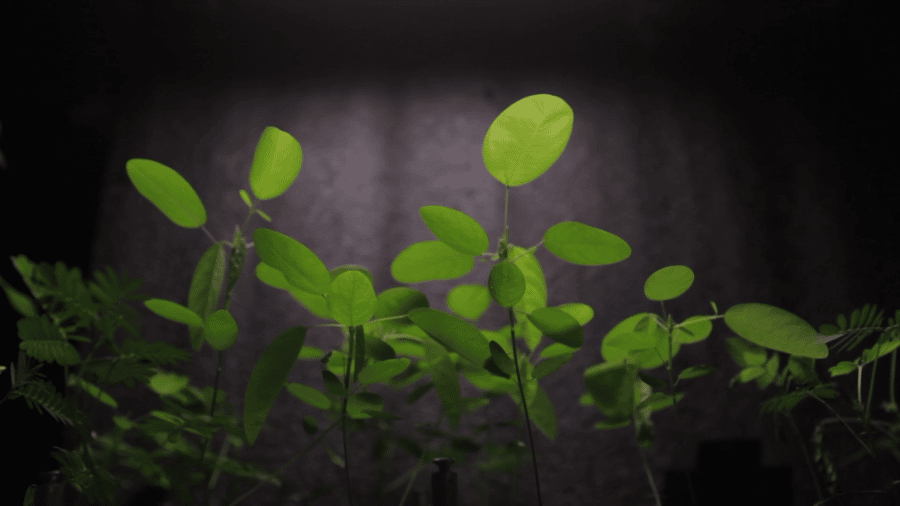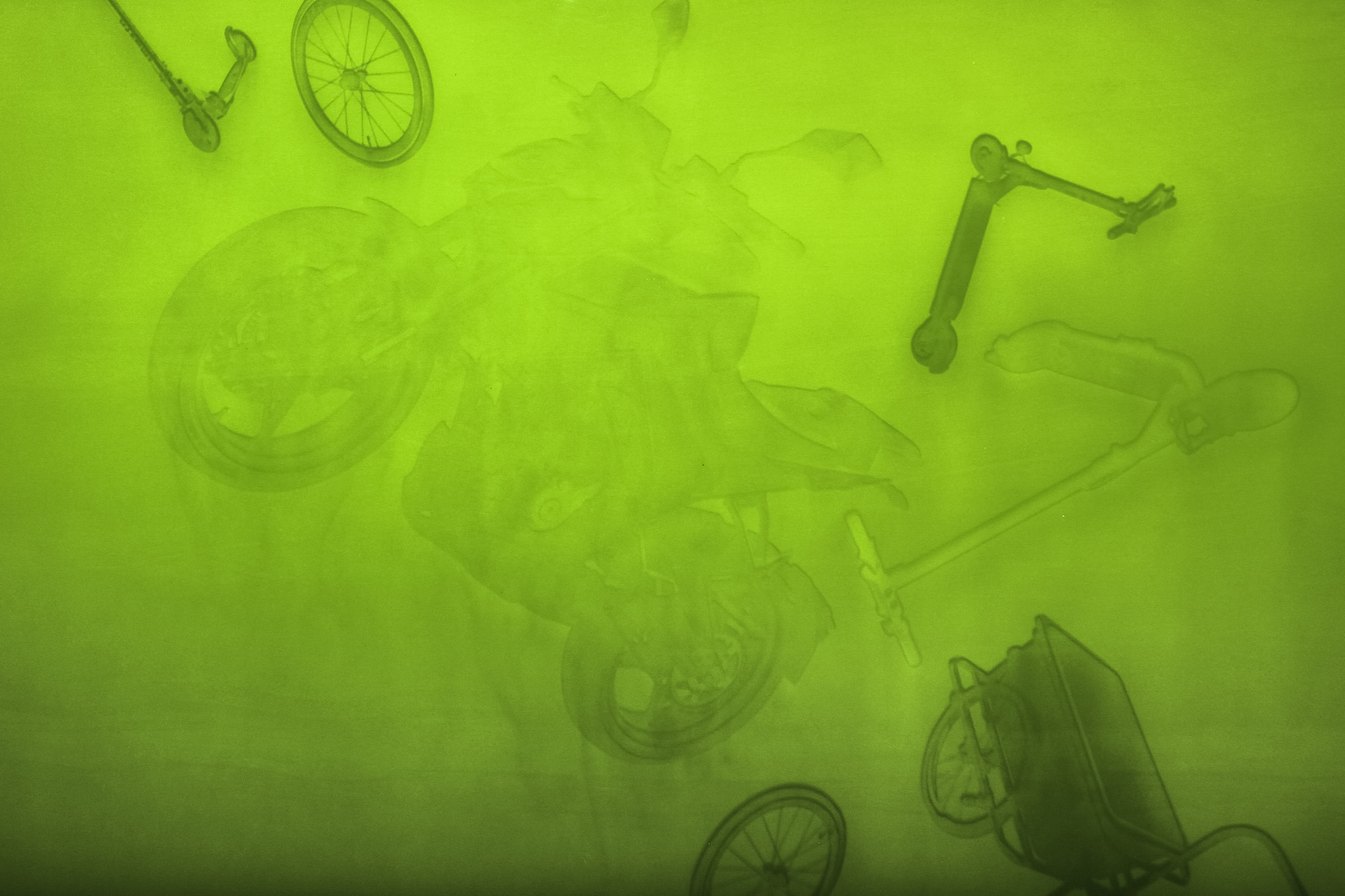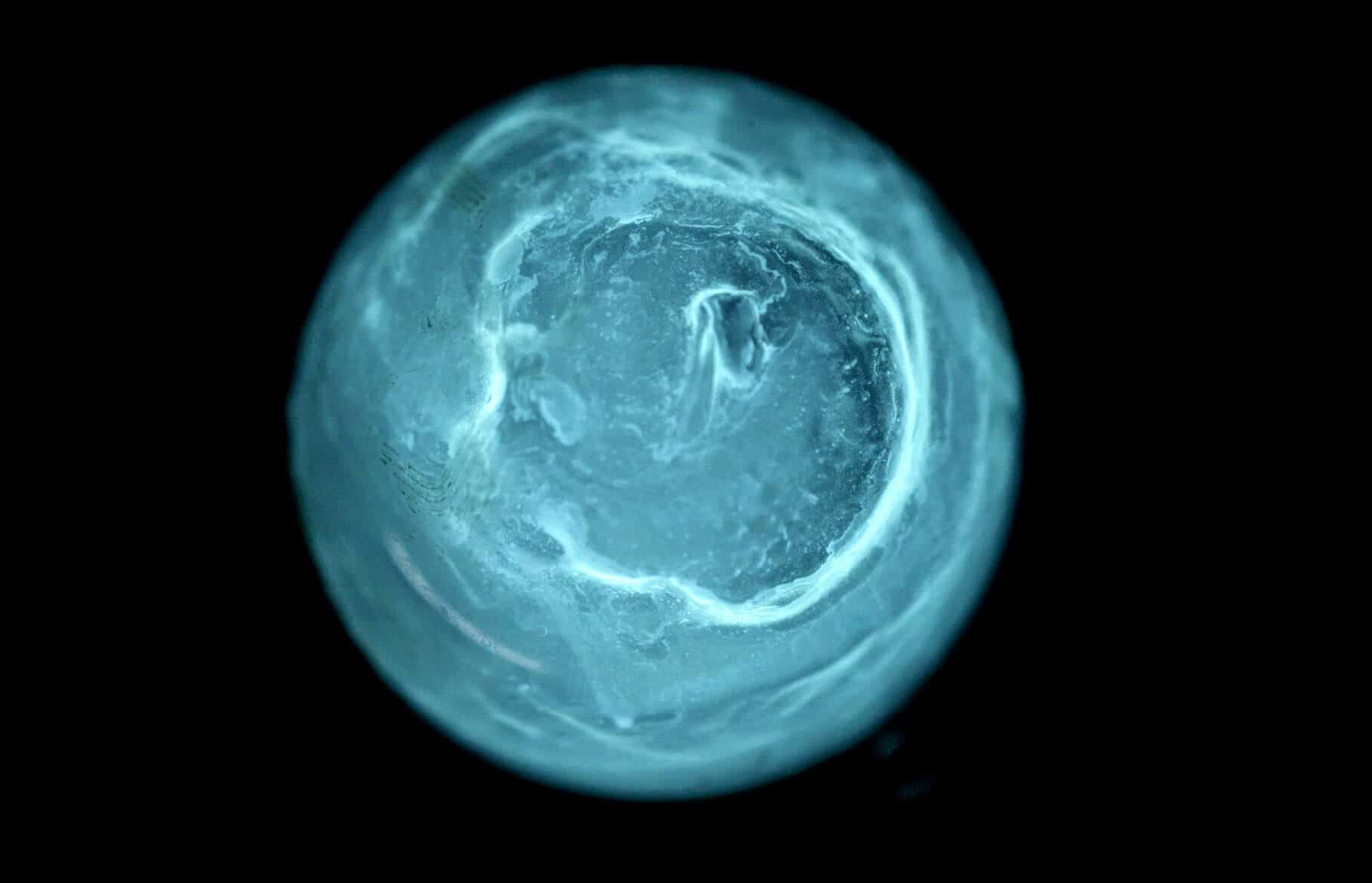The observation of a landscape passing by. The sun rises on a hill of spidery fur. Light dances on a cephalopod skin. The gaze seeks out the vision. The tarantula is busy manufacturing the world from insects, silk and dew. Cliffs emerge from the dawn. The light has not yet reached the face of humans. The tarantula tugs on the golden filaments. On the other side of the surface of creation, a cuttlefish teaches the landscape the variation of colours and forms. Its ancient eye registers every movement of the sea. Another presence intrudes. The gaze seeks out a vision, clumsily.
At times immobile, sometimes animated, a photosensitive technical object observes Creation. An interaction that awakens the vision. The gaze might believe itself to be on the outside looking in, it’s the great trickery of the gods; the vision cannot do so, it is here, alongside, amongst, captured. The crab locates, situates, territorialises. Violence and tenderness inherent in the vision, in other words the photosensitive relationship. Waves that are at times proteinic, at others digital, or both at once, run over the cephalopod’s skin. The technical object and the associated milieu, the environment of vision: the pulsation of the chromatophore is in harmony with the suppleness of the pixel. The digital sensor learns the long history of dermatoptism, or of visual perception through the skin. Ancient images appear through the shivers that run over the skin of the world, images of intertwinings, entrapments and transitions, of dominations and bewitchments. The coats of the bodies rub against spectres, whose visions still hold a bygone fantasy of capture and control. Unless the contrasting paths of the light allow for the powers of creation and destruction to be further redistributed.
An imagined garden prepares a new energetic emergence, suspended, patient, waiting for the earth. Under the vision of a snow leopard at the height of summer in Paris, some scrubland burns and leaves dance. Phototrophic stems that consume the light and imitate its movements. Archaic sensors of vision or mechanic illusion. To the rhythm of the dance, sometimes called “walking” by humans, plateaux of the world accumulate. In the darkness of the anthropic bowels of the earth and the glare of the modelling software, a gesture, perhaps futile. The resistance of a fantasy.
Jeremie Brugidou & Lia Giraud
Translated from French by Jacqui Chappell





